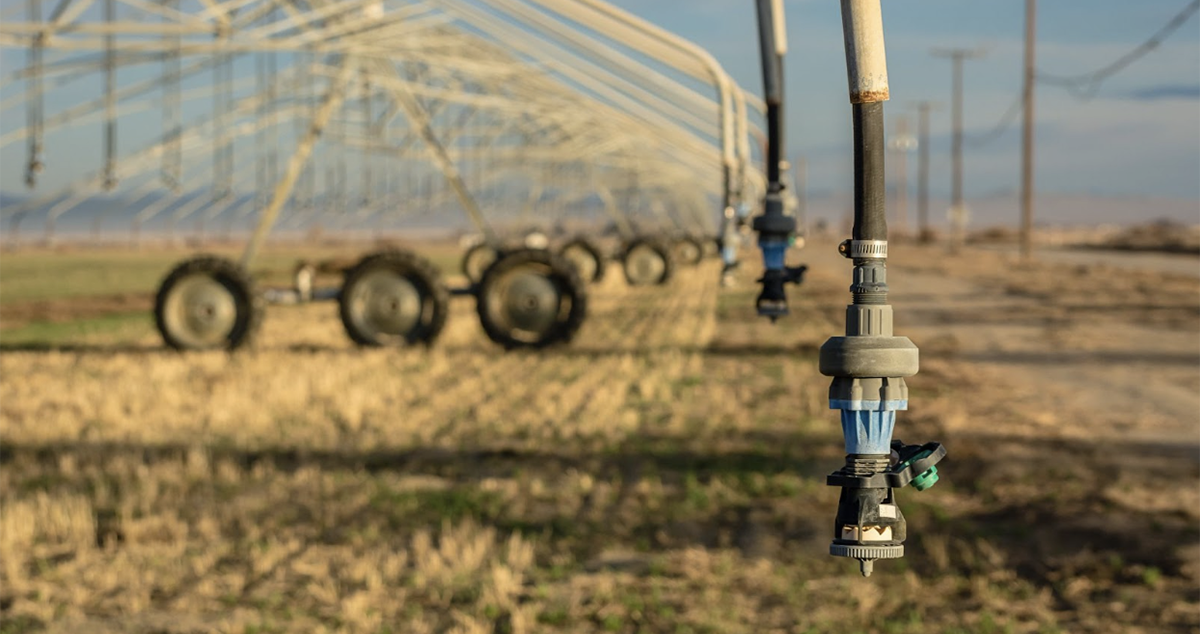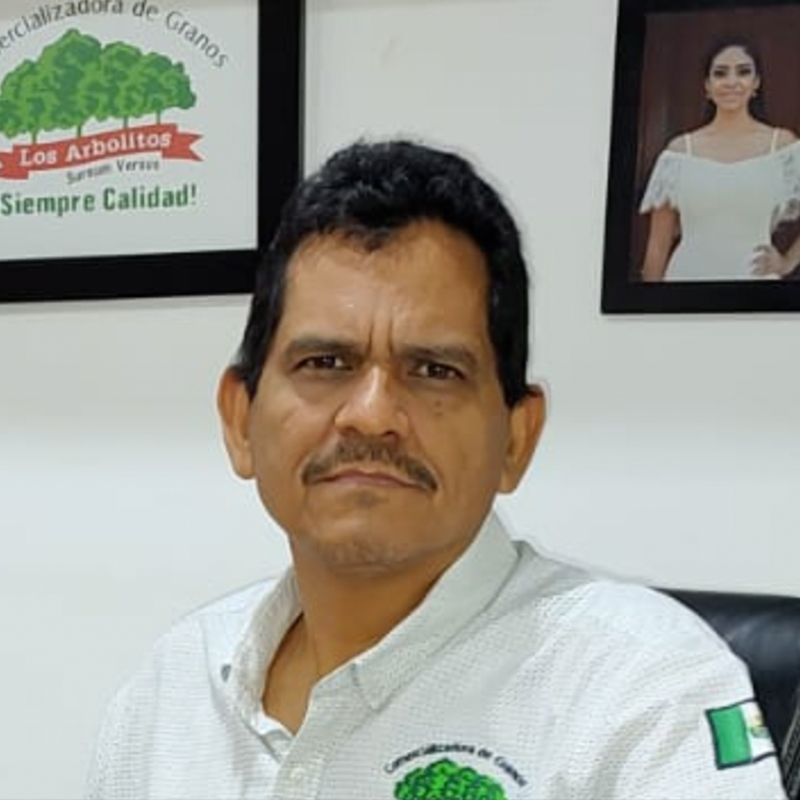August 30, 2022
The threat of drought looms once again over Mexican pulse-growing regions, but why do water worries keep returning? Speaking to scientists, producers and NGOs, Luke Wilkinson reports.


Drought is one of the biggest challenges facing Mexican agriculture in 2022. Increasingly, the country’s farmers find themselves confronted year on year with low rainfall and the constant threat of lost or damaged crops. Low water levels in the North of the country have even revealed long-forgotten towns in dried-up reservoirs.
What's more, Mexico is not alone. Farmers in Brazil, Argentina, Chile, India and the USA are among the long list of countries impacted by drought this year. Many European countries have also recorded their highest-ever temperatures and lower-than-average rainfall.
Scientists have suggested that the north of Mexico and south-west of the United States may be experiencing the biggest drought of the last 1200 years, one that has continued from the exceptionally dry years of 2020 and 2021 caused at least in part by La Niña, a climate phenomenon that creates weather extremes around the world. Some predictions suggest that drought caused by La Niña could be set to affect crops in the South-Western states of the USA for the third year in a row this winter.
Meanwhile, the agricultural sector in Mexico is struggling against the pressures of drought but is the lack of water accessibility for Mexican farmers solely down to lower rainfall, or are there other contributing factors?
Dr Victor Orlando Magaña of the Universidad Nacional Autonoma de Mexico (UNAM) in Mexico city, is an academic and expert in climate dynamics in the Tropical Americas and meteorological drought in Mexico. He believes that climate change is not the only cause of Mexico's scarcity of water and that a closer eye should be kept on the aquifers and national stores of water.

Dr Victor Orlando Magaña - Universidad Nacional Autonoma de Mexico (UNAM)
"It's not that I don't believe in climate change, you understand," said Dr Magaña, “I've worked in the area of climate change for a long time. It's just that I have come to realize that climate change is often used as an easy excuse to explain away the poor management of water in Mexico."
Water for agricultural use is free in Mexico; industries and regions are granted ‘concessions’ of water by the federal government based on demand and availability.
Arguments over these concessions have arisen frequently over recent years, such as when breweries have been granted rights to use water in various drought-affected areas. This has occurred in Monterey in the Northeast, and latterly Mexicali - where a Constellation Brands brewery was eventually vetoed by local referendum after contracted debates. In August, the President Andres Manuel Lopez Obrador said that companies should no longer make beer in regions affected by drought but that they would still be welcome in the southern areas of the country.
Monterey is an example of a region that has been racked by issues of drought, much of which is, according to Dr Magaña, a result of poor planning and water management combined with a growing population. In terms of the behavior of the climate, a 2016 study suggests that rain has actually increased in the region overall, but the drop in work on the infrastructure to supply water has prevented the area from keeping water levels up to date with population growth:
“In 1970 there were a little over 2 million people in the city; by 2020 they are up to 6 million, because people have moved there for industry and employment.”
The previously consistent hydraulic infrastructure works had managed to keep water levels high enough to cope with this growth - but that all changed in the 1990s: “After 1994 there were fewer works to improve water supply in the Monterey area that would have kept up with a growing population,” says Magaña, “this means that, although in theory the region should have more water, the demand grows so much that you end up using a water supply even faster than before."
Years where hurricanes occur bring high quantities of water to the region, refilling the aquifers and local reservoirs. These hurricanes, Dr Magaña says, serve to cover up some of the overextraction of water that depletes the reserves in times of average rainfall but they are unpredictable and an overreliance on extreme weather events would be a bad idea: “If you bet everything on a hurricane coming so that you have more water, that's a bit suicidal, isn't it?"
As there is a finite quantity of water, agriculture in the north of the country will compete with urban areas for concessions. This balancing act may pit cities against farmers, requiring changes of behavior from producers in the agricultural industry.
Farmers are likely to react badly to being asked to use less water, but the National Water Commission of Mexico (CONAGUA) has found that 57% of the total water used in agriculture across the country is wasted through poor irrigation techniques and outdated technology, suggesting a need for more efficiency. In the drier northern areas, it could be vital.
"We often use the phrase: ‘Mexico exports water’,” says Dr. Magaña. “Whatever the crop is - vegetables, fruit - it’s water. You can do this kind of heavy production in the south of the country, where there are a lot of water reserves but, once you try to grow profitable crops in areas where there is very little water, the entire population begins to pay the price of overexploitation."
Producers on the ground already feel some of the effects of drought on their crop options and water accessibility. Lack of access to water often leads farmers to move away from crops that demand more water and investment as, during a drought, a crop is more likely to result in lower yields - at great cost to the producer.
Cristobal Lopez is the CEO of Comercializadora Los Arbolitos, a pulse and grain trader in the Sinaloa region. Sinaloa saw a crisis in its reservoirs last year, when their water reserve levels dropped to levels 35% lower than the five-year average. The water in Sinaloa, as is the case throughout Mexico, is then distributed through irrigation modules, which are independent administrators of the delivery of water to the farmers in their assigned district.

Cristobal Lopez Diaz works in the Sinaloa region
Lopez has seen a direct effect on the crops that farmers are allowed to seed depending on the levels of water in local reservoirs. During last year's crisis, irrigation modules took measures to control farming: "They said to us, ‘You can only seed 50% areas of corn and 50% of low water demand crops. In other places 70% of corn and 30% of low demand crops’,” explains Lopez. “Low water demand crops can be beans, chickpeas, or safflower seed - whatever you like. These are some of the small controls placed on farmers so that the water lasts."
Looking to the future, Conselva, Costas y Comunidades, an NGO concerned with monitoring water levels in Mexico, recently predicted that over the next 20 years the state of Sinaloa will see a reduction in rain of up to 25% and an increase of temperature up to 1.4°C, a consequence largely due to climate change.
Dr. Victor Magaña agrees that climate change is making an impact but suggests that the agricultural industry also needs to look both inwards at its own practices and to the government for better management of the country’s water supply.
“In part,” says Magaña, “the drought is meteorological but the agricultural sector is also hugely vulnerable whenever the drought arrives. If you combine this high vulnerability to drought with the drought itself, the consequences can be disastrous."
So what changes could be made to prepare for future drought?
“Laws!” insists Magaña. “We can't wait to watch the breweries keep using their concessions of water that take away from everybody else, or have certain groups of farmers react badly when the government tries to take part of their concession of water from them to send to urban areas.”
“We need to see pilot projects financed by the government that can show the advantages of new styles of water management. For example, what happens if producers use more efficient methods of irrigation? Or use climate predictions? We need to use comparative studies of different climates around the country to show producers can have the same as they have now, but with lower consumption of water."
As of August 15, the governor of Sinaloa, Ruben Rocha Moya, has declared the severe drought risk over, assuring that the water availability problems are behind them as reservoirs have reached over 35% full on average.
Will this be enough? The governor appears confident it will but Cristobal Lopez is less optimistic: “I don't think it'll be enough. It's maybe just enough to get by, with restricted seedings, and using water for human consumption. He’s probably saying it’s OK at 35% because last year the reservoirs were at 35/36% and we got by, but we did it with great difficulty - there were short crops and all kinds of other problems.”
Between the mismanagement of natural reserves, inefficient irrigation, and suggestions of corrupt distribution of concessions, it is difficult to tell if there will be a solution to the constant cycles of drought.
It seems likely, however, that with a more serious approach to the conservation and distribution of water in the semi-arid lands of Northern Mexico, it may be possible to mitigate the issue. Legislation from the government could be an important step forward and, if it’s true that everything Mexico exports is water, then the government must work harder to protect it from overexploitation.
Disclaimer: The opinions or views expressed in this publication are those of the authors or quoted persons. They do not purport to reflect the opinions or views of the Global Pulse Confederation or its members.